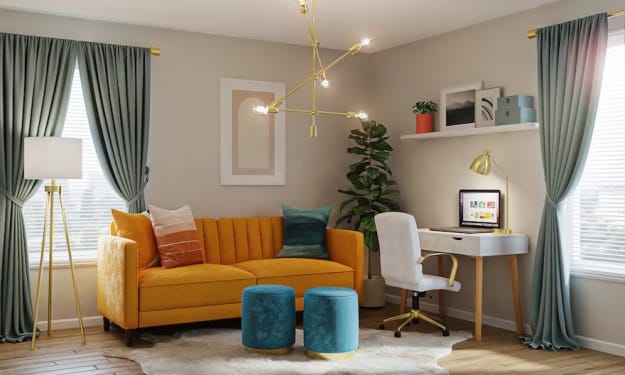7 Smart Home Technologies To Look Out For
Smart home technologies – the future is here! Here are this year's top smart home technologies.

Smart homes are no longer a science fiction concept. Many of the technologies that were suggested in sci-fi such as voice-controlled functions and self-regulating climate control are now a reality.
Here are 7of the top smart home ideas for 2023 that will not only make your life easier but will increase the value of your home
Top Smart Home Ideas
Smart home ideas are being developed for every area of a modern home and these are just some of the things you’ll see in 2023.
Security Systems
Security systems allow you to monitor your home remotely. Some types include:
- Video doorbells – allow you to see who is at your door and answer them from your mobile device.
- Video surveillance – allows you to log in and monitor various rooms in your home on your smartphone and notify authorities if necessary.
- Smart locks – allow you to lock and unlock doors remotely, preventing accidental lock-outs and allow you to give visitors access when you are not there.
Voice-Command Systems
Voice-command devices began with virtual assistants such as Amazon’s Alexa and Apple’s Siri. These have become more sophisticated lately and you can now voice command when you enter a room to adjust lighting, temperature, background music, and the like.
You can also choose between a smart speaker or a smart display screen which allows you to connect both visually and vocally.
Intelligent Heating/Cooling
A smart thermostat is one of the most popular smart home ideas and can be programmed via an app to only heat or cool those rooms you need. This reduces your household emissions and saves energy and money over the course of the year.
A smart thermostat can also be programmed using Wi-Fi in a process known as geofencing. This alters your home's temperature via your phone's location service. It senses when you cross a virtual boundary and adjusts the temperature accordingly.
Robots are no longer the preserve of science fiction. They are already being used in smart homes in the form of robot vacs and robot-mowers which utilize image recognition navigation to clean your floors and mow your lawns.
And the second generation of robots is far more sophisticated with complex voice recognition software and a more human-like appearance, they are the latest addition to high-end smart homes. There are even robot pets now available which are as life-like as the real thing.
Health Devices
Smart homes are becoming, even more, user-friendly than ever. Occupants with particular health issues can now take advantage of devices such as fall sensors (notify authorities of a fall), health monitors, and even smart toilets which offer waste analysis and blood pressure and heart rate monitor.
Air quality monitoring and adjustment is also another feature available in a smart home. This is particularly useful for those with respiratory problems such as asthma.
Smart Appliances
There are a number of intelligent appliances available for various duties in a smart home. In a kitchen, these can include a smart refrigerator which can be accessed remotely for its contents while you are shopping at the supermarket, and smart ovens which can offer recipe suggestions via a built-in online display.
Other smart home appliances include taps that will prepare your bath to your preferred temperature and will turn on and off with a wave of your hand. There are also washing machines that will wash your clothes during off-peak energy periods using minimum water.
Eco-Friendly Features
Environmental concerns play an important part in many aspects of modern life. And smart homes are no exception. They can incorporate a number of green features into their design and many house and land package providers now offer buyers the choice of smart features. Eco-friendly features in a smart home can include:
- Prefab construction – many smart homes are built off-site in a factory using sustainable practices and containing sustainable materials which don’t damage the environment and are energy efficient.
- Solar energy – while most houses today have solar panels on the roof, the solar industry has developed to the point where homeowners can be much less dependent on the grid for their energy. The improvement in battery technology has made this even more possible. Additionally, tomorrow’s solar panels will not be panels at all, but tiles built into the roof to match the design of the house.
- Recycling – this is an important aspect of sustainability and some smart homes now feature water and waste recycling and reduction, composting, and even devices that sort and identify various types of household rubbish.
Technology is advancing so rapidly that it would be safe to say that today’s smart home will be tomorrow’s standard build. The cost of components is steadily decreasing and with more players in the marketplace, compatibility between systems is fast becoming a reality.
So, if you like the idea of a smart home, 2023 may be an exciting time for you and the new innovations mentioned here are just the tip of the iceberg.
About the Creator
Todd Green
Todd is a freelance writer specialising in business and education or focusing primarily on the meaning of life.
Wishes more people were like David Attenborough.






Comments
Todd Green is not accepting comments at the moment
Want to show your support? Send them a one-off tip.